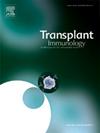Lung transplantation: Current insights and outcomes
Abstract
Until now, the ability to predict or retard immune-mediated rejection events after lung transplantation is still limited due to the lack of specific biomarkers. The pressing need remains to early diagnose or predict the onset of chronic lung allograft dysfunction (CLAD) and its differential phenotypes that is the leading cause of death. Omics technologies (mainly genomics, epigenomics, and transcriptomics) combined with advanced bioinformatic platforms are clarifying the key immune-related molecular routes that trigger early and late events of lung allograft rejection supporting the biomarker discovery. The most promising biomarkers came from genomics. Both unregistered and NIH-registered clinical trials demonstrated that the increased percentage of donor-derived cell-free DNA in both plasma and bronchoalveolar lavage fluid showed a good diagnostic performance for clinically silent acute rejection events and CLAD differential phenotypes. A further success arose from transcriptomics that led to development of Molecular Microscope® Diagnostic System (MMDx) to interpret the relationship between molecular signatures of lung biopsies and rejection events. Other immune-related biomarkers of rejection events may be exosomes, telomer length, DNA methylation, and histone-mediated neutrophil extracellular traps (NETs) but none of them entered in registered clinical trials. Here, we discuss novel and existing technologies for revealing new immune-mediated mechanisms underlying acute and chronic rejection events, with a particular focus on emerging biomarkers for improving precision medicine of lung transplantation field.

 求助内容:
求助内容: 应助结果提醒方式:
应助结果提醒方式:


